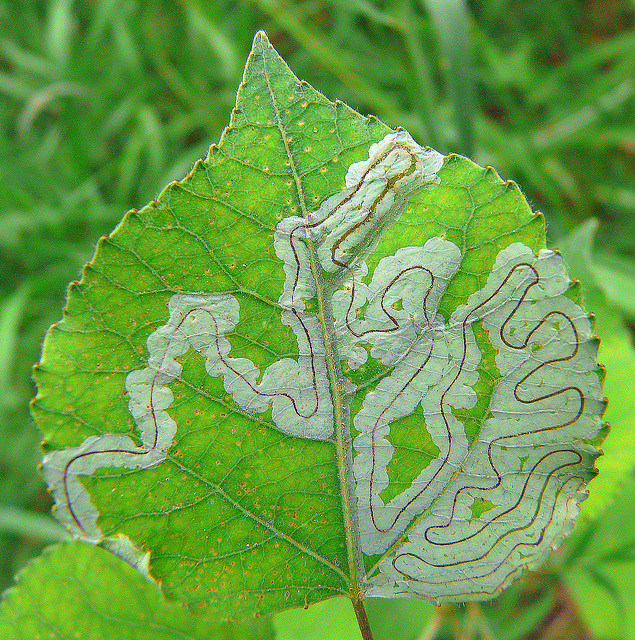A favourite colour
Seen at Strathcona Park Ravine
Darner details
Swainson's Hawk
Paper Kite
Glowing
Fritillary
Pink on blue
Bow Valley Provincial Park
Nature's artwork
Wilting in the heat
Prairie Gentian
Snowy Owl female
Layer upon layer
Deep in the forest
Taking a good look
The eye
Hibiscus
Immature Swainson's Hawk
Aster curls
Leafy Spurge Hawk Moth caterpillar
The return of passion
Variable Darner
Juvenile Cooper's Hawk
Prickly Lettuce
Fireweed
Beauty in miniature
Dame's-rocket
Black Henbane
Black Henbane seedpods
Roses are pink
Rust on Saskatoon berries
Black and white beauty
Tail end
A few wildflowers
Black Swan
Mule Deer fawn
Small-flowered Forget-me-not
Hairs and spines
Cherry-faced Meadowhawk
Two for the price of one
Hoary Plantain
Feeling the heat
Curves
Black Meadowhawk
Keywords
Authorizations, license
-
Visible by: Everyone -
All rights reserved
-
139 visits
Larvae tunnels


Occasionally, we will come across one of these leaves, patterned by larvae tunnels. This one was seen at Strathcona Park Ravine yesterday morning.
"Black, continuous string within long, silvery tunnel right under epidermis of leaf:....Phyllocnistis populiella (Lepidoptera: Gracillariidae". From www.helsinki.fi/science. Not sure if this explanation fits my specimen - it sounded right : )
"The larva of an aspen leaf-miner moth, Phyllocnistis populiella, feeds between the two epidermal layers of a leaf. This larva his eaten his way over much of the leaf and has left a well defined trail which ends where he exits as a moth. Damage is caused when eggs that have been deposited between the leaf layers hatch and larvae begin to feed on the nutritive tissue between the dermal leaf layers creating a small pocket as they meander back and forth. The bugs attacking the aspens are tiny whitish moths as thin as pencil lead, so small that four of them could ride on the back of a mosquito. These moths overwinter on the forest floor, emerge after the snow melts, and lay eggs on aspen buds when they pop from stems. When the aspen leaves develop, so do the little yellow caterpillars that scar them. The caterpillars feed on leaves until they emerge as an adult moth in about three weeks. Typically, the damage does not affect the health of the tree."
"Black, continuous string within long, silvery tunnel right under epidermis of leaf:....Phyllocnistis populiella (Lepidoptera: Gracillariidae". From www.helsinki.fi/science. Not sure if this explanation fits my specimen - it sounded right : )
"The larva of an aspen leaf-miner moth, Phyllocnistis populiella, feeds between the two epidermal layers of a leaf. This larva his eaten his way over much of the leaf and has left a well defined trail which ends where he exits as a moth. Damage is caused when eggs that have been deposited between the leaf layers hatch and larvae begin to feed on the nutritive tissue between the dermal leaf layers creating a small pocket as they meander back and forth. The bugs attacking the aspens are tiny whitish moths as thin as pencil lead, so small that four of them could ride on the back of a mosquito. These moths overwinter on the forest floor, emerge after the snow melts, and lay eggs on aspen buds when they pop from stems. When the aspen leaves develop, so do the little yellow caterpillars that scar them. The caterpillars feed on leaves until they emerge as an adult moth in about three weeks. Typically, the damage does not affect the health of the tree."
- Keyboard shortcuts:
Jump to top
RSS feed- Latest comments - Subscribe to the comment feeds of this photo
- ipernity © 2007-2024
- Help & Contact
|
Club news
|
About ipernity
|
History |
ipernity Club & Prices |
Guide of good conduct
Donate | Group guidelines | Privacy policy | Terms of use | Statutes | In memoria -
Facebook
Twitter

Sign-in to write a comment.